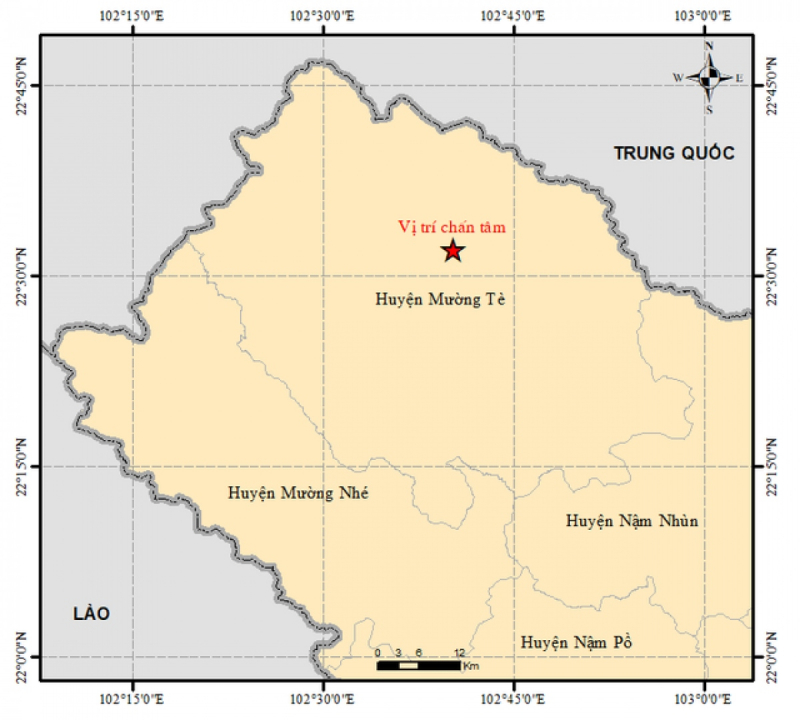Earthquake hits Vinh Phuc and Lai Chau
Muong Te district in the northern mountainous province of Lai Chau and Yen Lac district in the northern province of Vinh Phuc, both of which border Hanoi, were struck by earthquakes on the early morning of March 3.

According to the latest information provided by the Earthquake Information and Tsunami Warning Centre of the Institute of Geophysics, the tremor in Muong Ye district was measured at 4.4 on the Richter scale and was detected at 4:49 a.m. The epicentre of the earthquake was located some 16 kilometres underground.
With the quake recording a relatively strong intensity, people could clearly feel a strong shaking when it hit.
Nguyen Xuan Anh, director of the Earthquake Information and Tsunami Warning Centre of the Institute of Geophysics, said that previously the largest earthquake to hit Muong Te district had been recorded at 4.9 magnitude on the Richter scale and was reported back in 2020 with its epicentre located about 12.6 kilometres underground.
A number of houses and public works were subsequently damaged by the earthquake, whilst four children at a local kindergarten suffered slight injuries when a plaster ceiling collapsed on them.
He noted that earthquakes often occur in Lai Chau as the province is located on a fault line, with the largest earthquake of 6.8 magnitude being reported in the province in 1983.
Furthermore, early in the morning residents of Yen Lac district in the northern province of Vinh Phuc also suffered an earthquake measuring 3.2 on the Richter scale, with the quake occurring at 08.09 a.m. at a focal depth of approximately 16 kilometres.
The earthquake area is located adjacent to many suburban districts of Hanoi.
Anh assessed that as Hanoi and adjacent areas are located in the Red River-Chay River fault zone, earthquakes with a magnitude of 5.1 to 5.5 may occur.
The Institute of Geophysics is therefore continuing to monitor developments of the phenomenon.
Recently, several experts have recommended installing an earthquake monitoring system in Hanoi as the capital’s old apartment buildings are at risk if disaster strikes. The system aims to record data, as well as to analyse and evaluate the intensity of earthquakes in order to make specific recommendations for each area.
Due to poor ground, Hanoi may feel vibrations from other major earthquakes in other places. Recently, local residents reported vibrations caused by earthquakes from neighbouring countries such as Laos and China.

